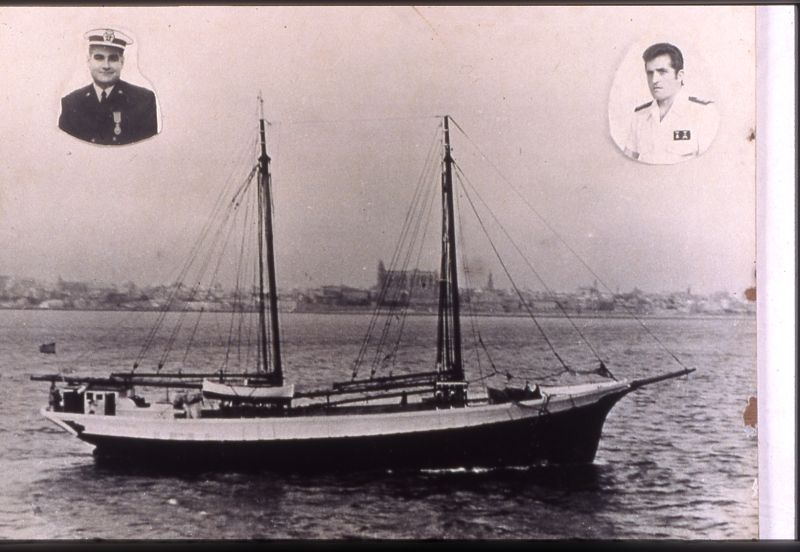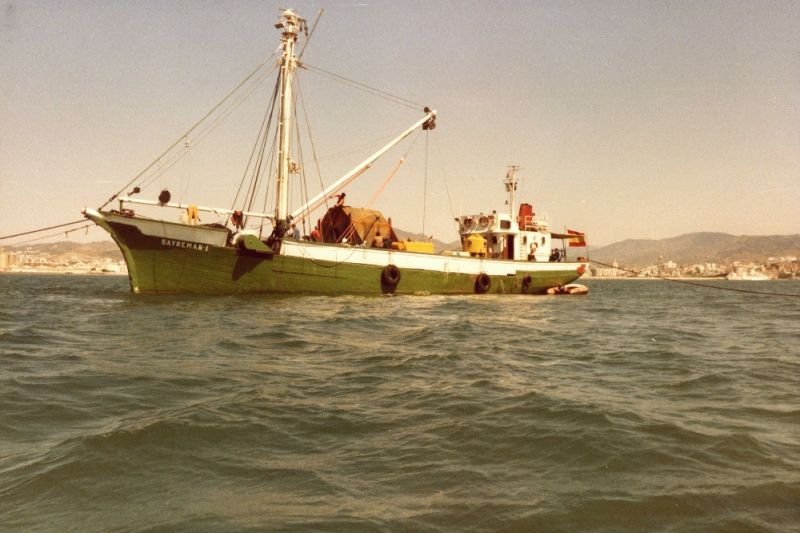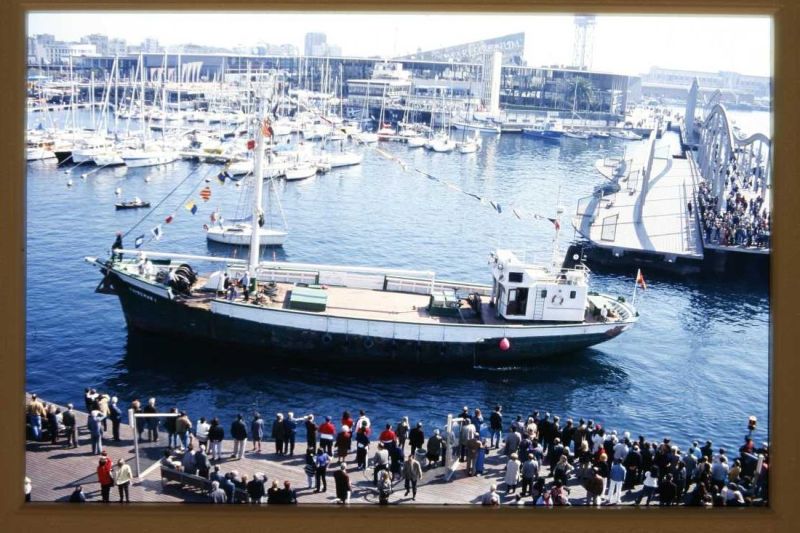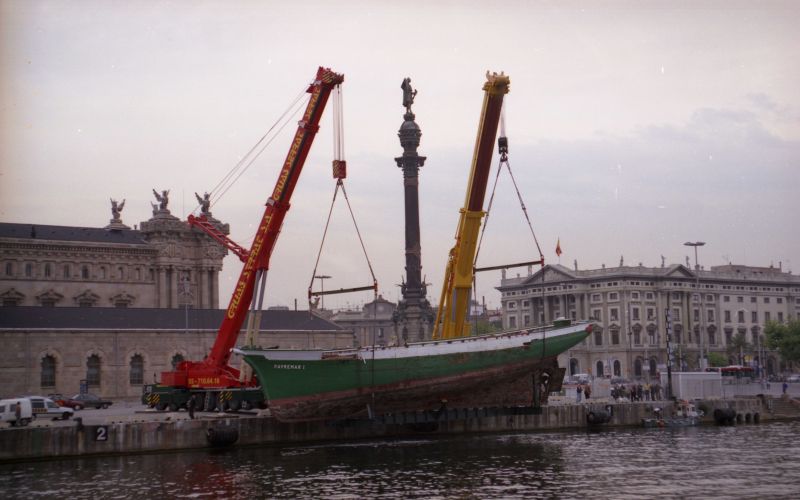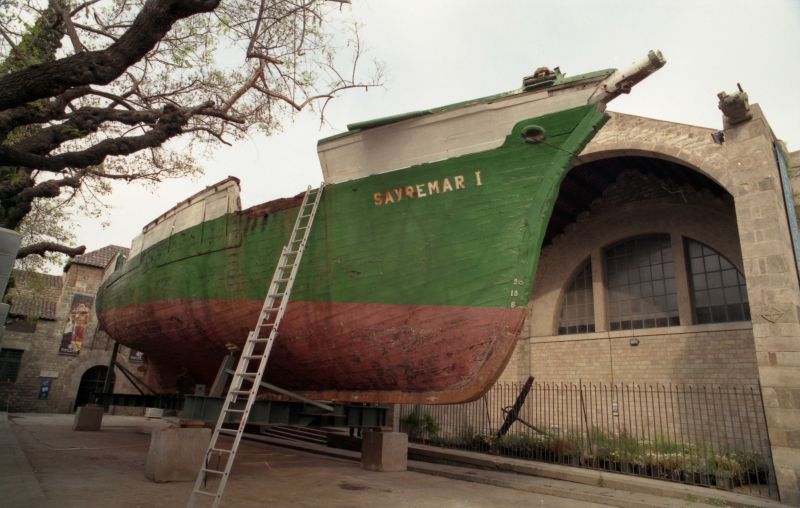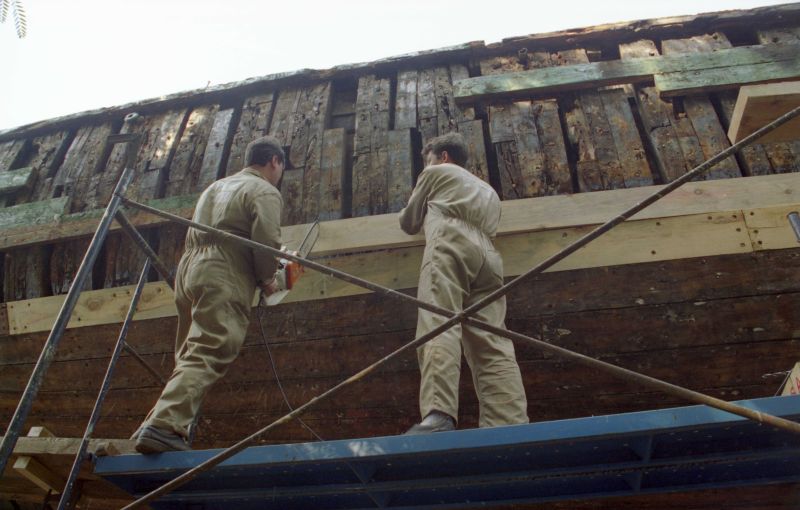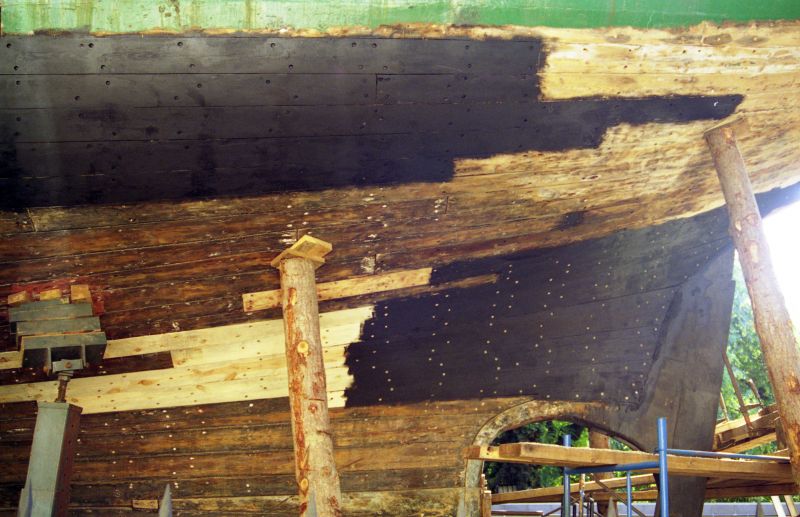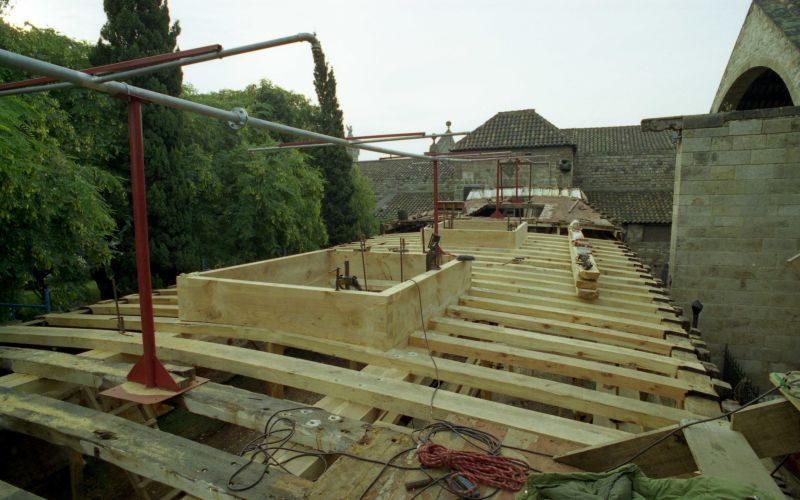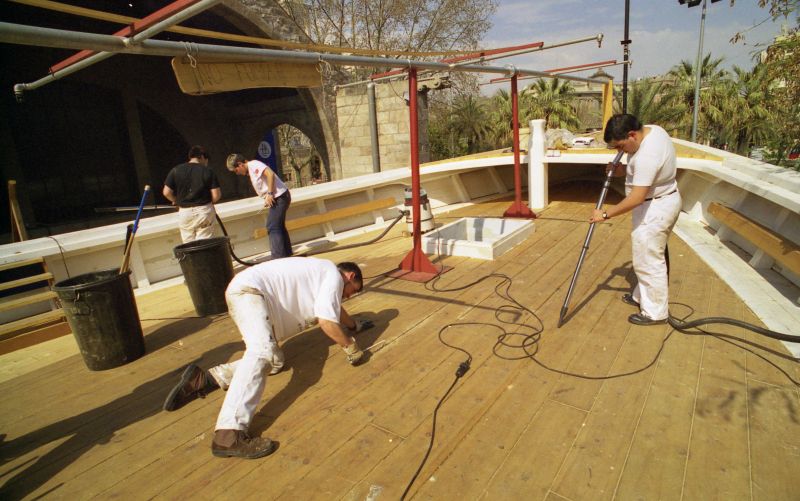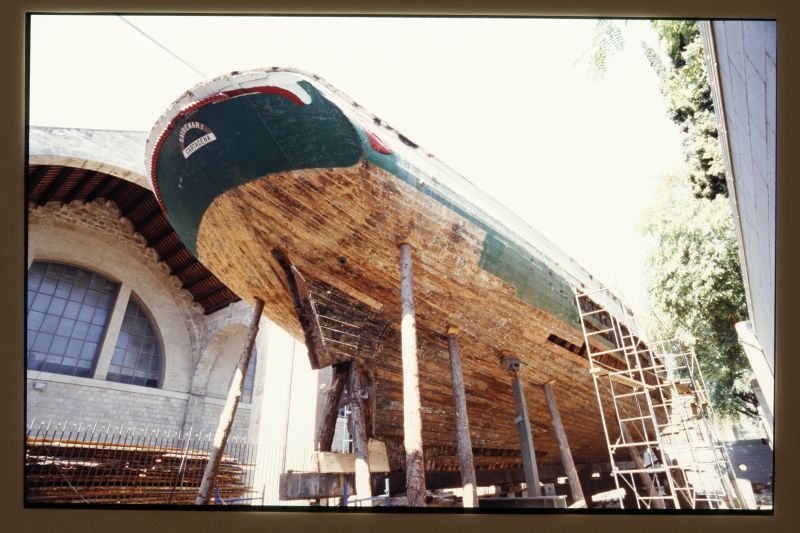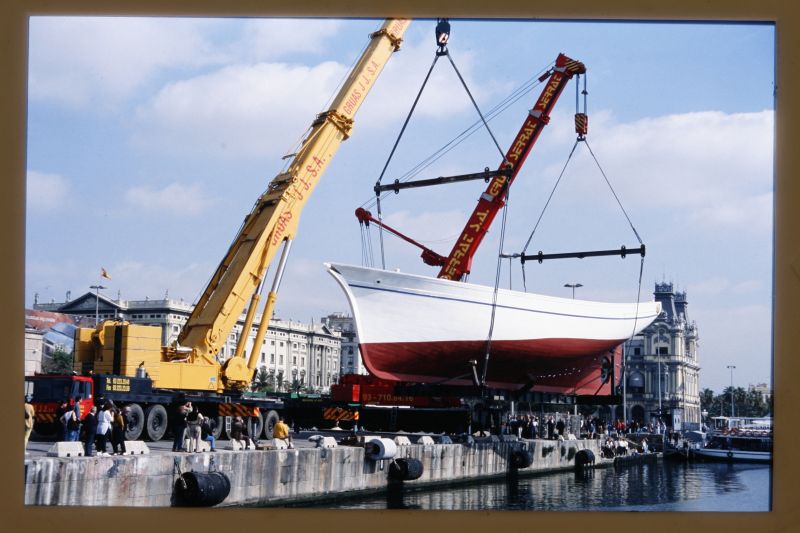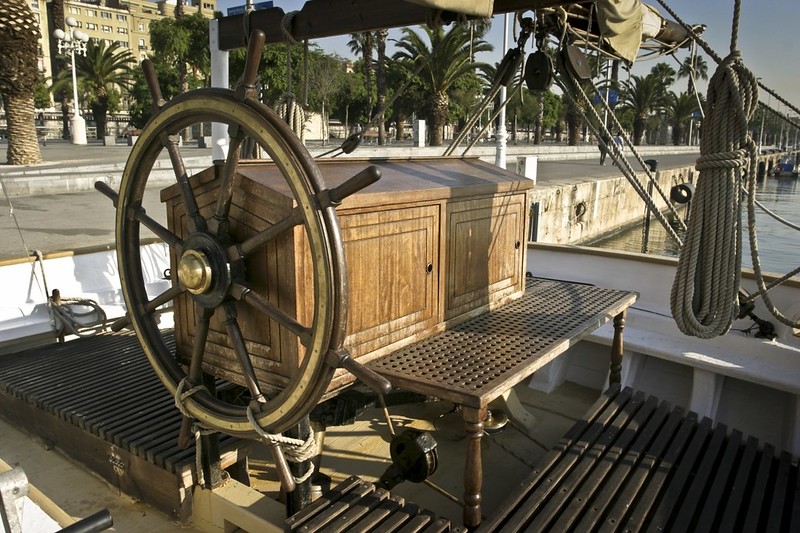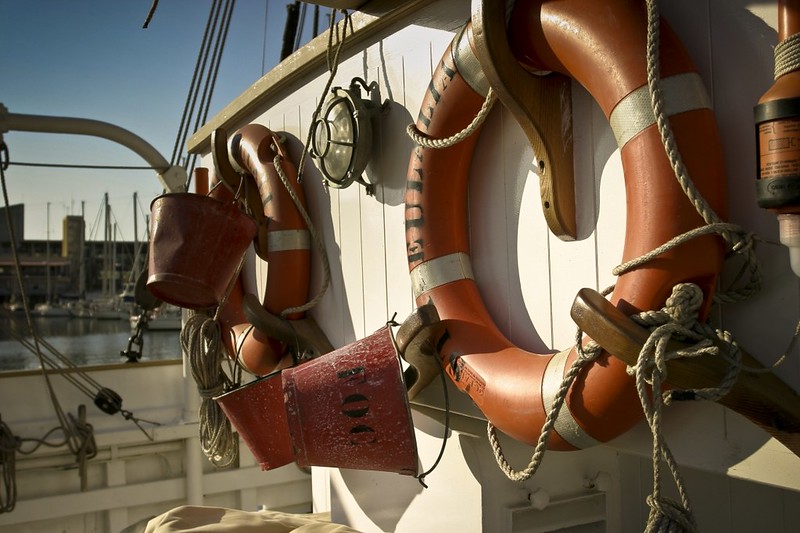The life of a historic vessel
The schooner Santa Eulàlia is a 100-year-old sailing ship that is part of the fleet of the Maritime Museum of Barcelona. It was one of the last sail-powered vessels used for transporting freight in the Mediterranean. Nowadays it is a key item of heritage that can help us to appreciate our country’s maritime history. In 2011, the Generalitat of Catalonia declared the ship a Cultural Asset of National Interest (BCIN). At present the Santa Eulàlia acts as an ambassador for the Museum, the city and the country, and participates in maritime cultural events. It has become the most popular venue for courses in astronomy, maritime photography and other activities on the Museum’s educational program, and it is also one of the star features of the Christmas festival in Barcelona, as it is the ship that brings the Three Kings to the city. The Santa Eulàlia is moored at Moll de la Fusta (Bosch i Alsina), in Barcelona’s Port Vell, very close to the Maritime Museum. It is open to visitors every day, and on Saturday mornings it sets off for a trip along the city’s waterfront.
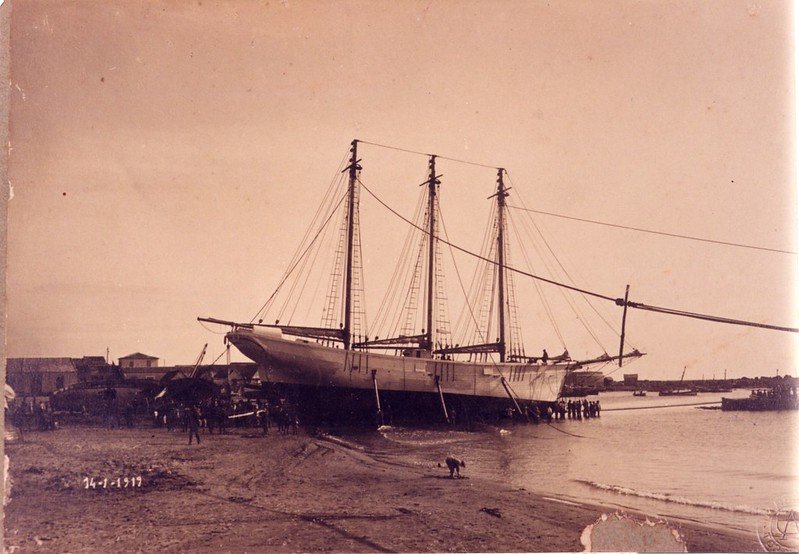
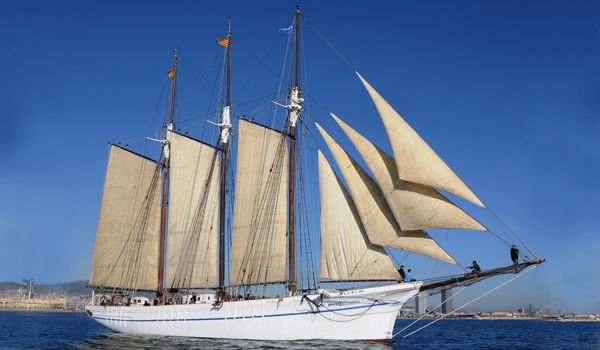
The ship was built in 1918 at Torrevieja (Alicante) for the shipowner Pascual Flores, who named the vessel after his daughter: Carmen Flores. It was used for transporting freight (such as cereals, wood, salt and minerals) throughout the Mediterranean and also across the Atlantic (Cuba). Thanks to her speed and efficiency, the vessel was given the nickname El Chulo (‘hotshot’). During her lifespan, the ship has been overhauled several times, adapting her for different functions. In 1928, she was fitted with her first engine, then in 1975 she was converted into an auxiliary vessel for underwater work. Her owner and her name have changed several times, from Puerto de Palma (1931) to Cala San Vicenç (1936) followed by Sayremar Uno (1975). In 1997 the Maritime Museum of Barcelona purchased her at public auction, with the aim of conserving one of the last existing schooners in the Mediterranean. In 1998 and 1999, the Museum carried out the work to restore the vessel to her original appearance and incorporate her into the new collection. In the year 2000 the schooner was launched once again, renamed the Santa Eulàlia, in honour of the city’s joint patron saint.
Visit
TIMETABLE
The boat is not wheelchair-accessible.
Summer opening hours (April-October)
From Tuesday to Sunday, and public holidays: from 10:oo am to 8 pm.
Saturdays: from 2:00 pm to 8 pm.
Non-holiday Mondays, closed.
Winter opening hours (November-March)
From Tuesday to Sunday, and public holidays: from 10:00 am to 5:30 pm.
Saturdays: from 2:00 pm. to 5:30 pm.
Non-holiday Mondays, closed.
Location: Moll Bosch i Alsina (Moll de la Fusta)
Free for anyone with a Museu Marítim de Barcelona entrance ticket.
Publications

The restoration of the Santa Eulàlia – a veteran ship that is sailing once again, as a living feature of the Maritime Museum of Barcelona – was not just a pioneering project in Spain, it was also a great adventure, which is narrated in this book.
The pailebot “Santa Eulàlia” of the Maritime Museum of Barcelona / Enric Garcia (Ed. by Museu Marítim de Barcelona)

Plans of the schooner Santa Eulàlia
Pailebot “Santa Eulàlia”, drawn by Alfredo Jaén (Ed. by Museu Marítim de Barcelona)
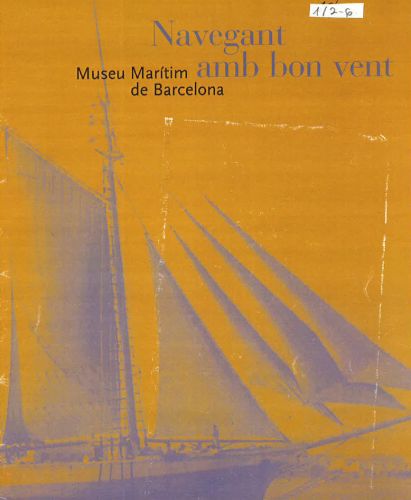
The schooner is testimony to the end of a golden age of sail-powered merchant shipping, a period that took place in the 19th century, when Catalan ships played an important role in the trade with America. The restoration of this magnificent vessel has bestowed the city with a living testament to our seafaring history.
Navegant amb bon vent (Ed. by Museu Marítim de Barcelona)
Restoring the schooner
The restoration of the schooner Santa Eulàlia was a pioneering operation in Catalonia, the first of its kind executed to rehabilitate an example of Spanish-made maritime heritage, organised by a public museum and using strict criteria. Between 1997 and 2001, work was carried out to restore the vessel to her original state, to become once again a fully-functioning historic sailing ship. With this restoration project, the MMB embarked on the creation of a working fleet of heritage vessels, which now numbers ten ships and boats.
Activities calendar
Sailing trips

Diego Yriarte
We invite you to take a journey back in time to discover how Barcelona’s seafront area has evolved. Aboard the schooner, you’ll be able to see the transformation of Port Vell, the construction of Barceloneta, the sailors’ district, and the old baths from the early 20th century, the slum areas of Somorrostro and Camp de la Bota, and their subsequent transformation into the Vila Olímpica district and the Fòrum.
Events

The schooner Santa Eulàlia features in some of the most important popular celebrations in the city of Barcelona. Each January, the Three Kings arrive at the Port of Barcelona on board the schooner to hand out gifts to children. The vessel also makes an appearance at the Festival of Santa Eulàlia, with the traditional trip “Les Laies es fan a la mar”.
Other events for promoting maritime heritage in which the schooner participates include “La Festa del Mar” at Port d’Arenys de Mar, and “La Festa de la Sal” at L’Escala.
Regattas and sailing trips
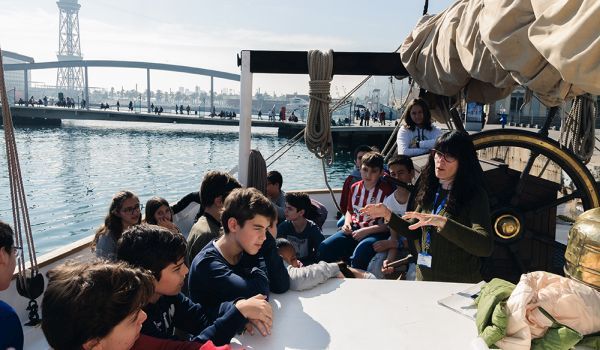
Pere de Prada
“Catalunya al través. La vela com a escola de vida” (Catalunya crosswise. Sailing as a school of life) is an educational project in which young people learn by sailing on a ship. It involves young cabin boys and girls taking a trip along the Catalan coast on historic and traditional sailing ships.
With the aim of educating and promoting our seafaring history, the schooner Santa Eulàlia takes part in various regattas and boat trips that feature traditional vessels.
Galery

Pere de Prada





